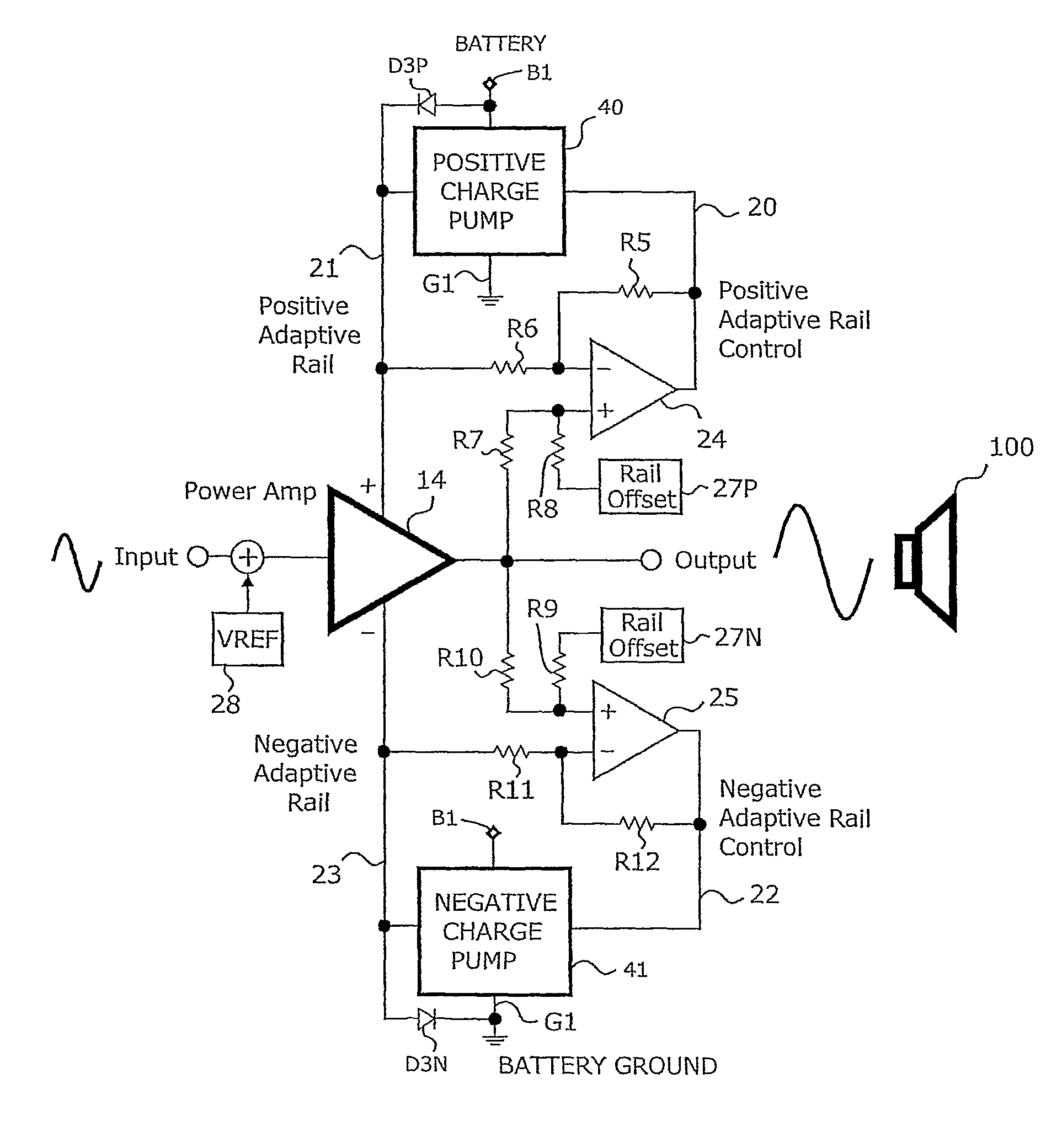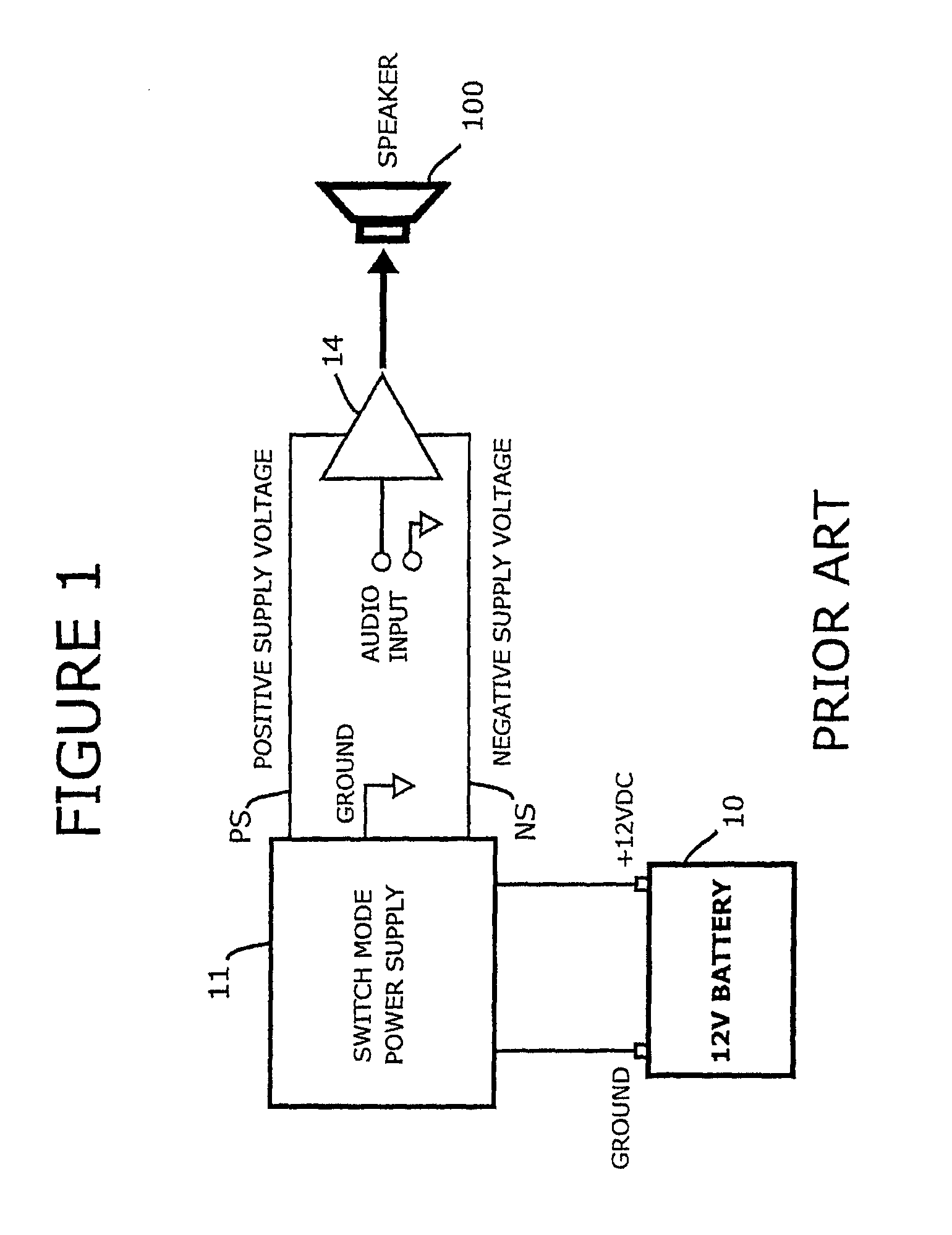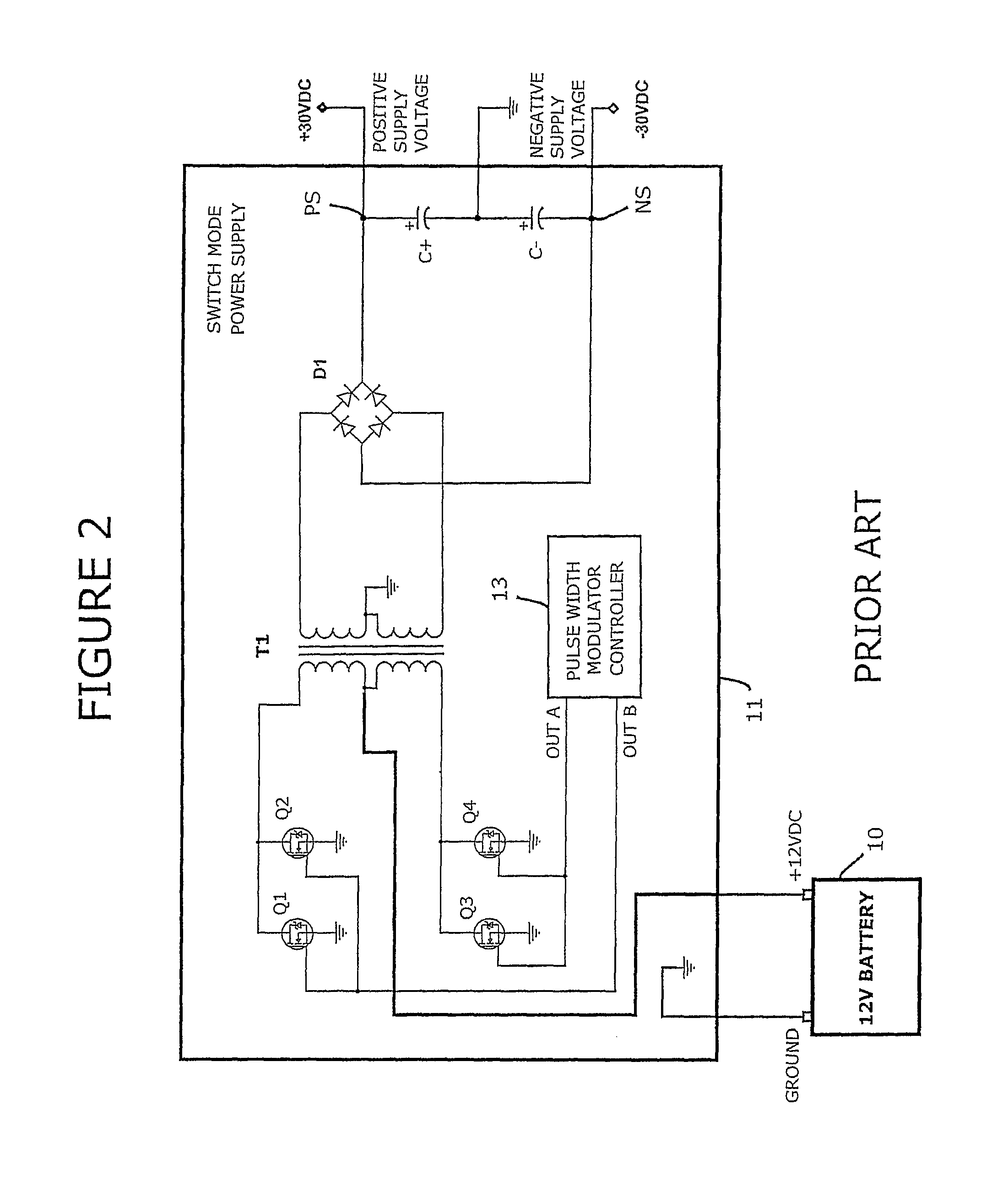Adaptive rail power amplifier technology
a power amplifier and adapter rail technology, applied in the direction of low frequency amplifiers, transducer casings/cabinets/supports, electrical transducers, etc., can solve the problems of reducing the size of both transformers tb, capacitors c+ and c, and design suffer from high emi/rfi emissions, so as to achieve the same level of performance and reduce parts and complexity
- Summary
- Abstract
- Description
- Claims
- Application Information
AI Technical Summary
Benefits of technology
Problems solved by technology
Method used
Image
Examples
Embodiment Construction
[0036]In the following description of the Figures, similar reference symbols designate corresponding structural parts or functional blocks.
The Prior Art Automotive Aftermarket Power Amplifier
[0037]Turning first to FIG. 1, a block diagram of the typical aftermarket automotive power amplifier is shown. The switch mode power supply 11 and the audio power amplifier 14 are contained in one chassis or unit. A 12 volt battery 10 provides the input power to the switch mode power supply 11 via a +12 volt and ground connection. The switch mode power supply 11 converts the 12 volt battery voltage to a bipolar output voltage referenced to ground, providing a positive output voltage PS and a negative output voltage NS, which supplies bipolar power to the amplifier 14. The audio amplifier 14 receives an audio input signal and amplifies this audio input signal to drive a speaker 100.
[0038]Looking at FIG. 2, a simplified schematic of the switch mode power supply 11 of FIG. 1 is shown. The switch mo...
PUM
 Login to View More
Login to View More Abstract
Description
Claims
Application Information
 Login to View More
Login to View More - R&D
- Intellectual Property
- Life Sciences
- Materials
- Tech Scout
- Unparalleled Data Quality
- Higher Quality Content
- 60% Fewer Hallucinations
Browse by: Latest US Patents, China's latest patents, Technical Efficacy Thesaurus, Application Domain, Technology Topic, Popular Technical Reports.
© 2025 PatSnap. All rights reserved.Legal|Privacy policy|Modern Slavery Act Transparency Statement|Sitemap|About US| Contact US: help@patsnap.com



